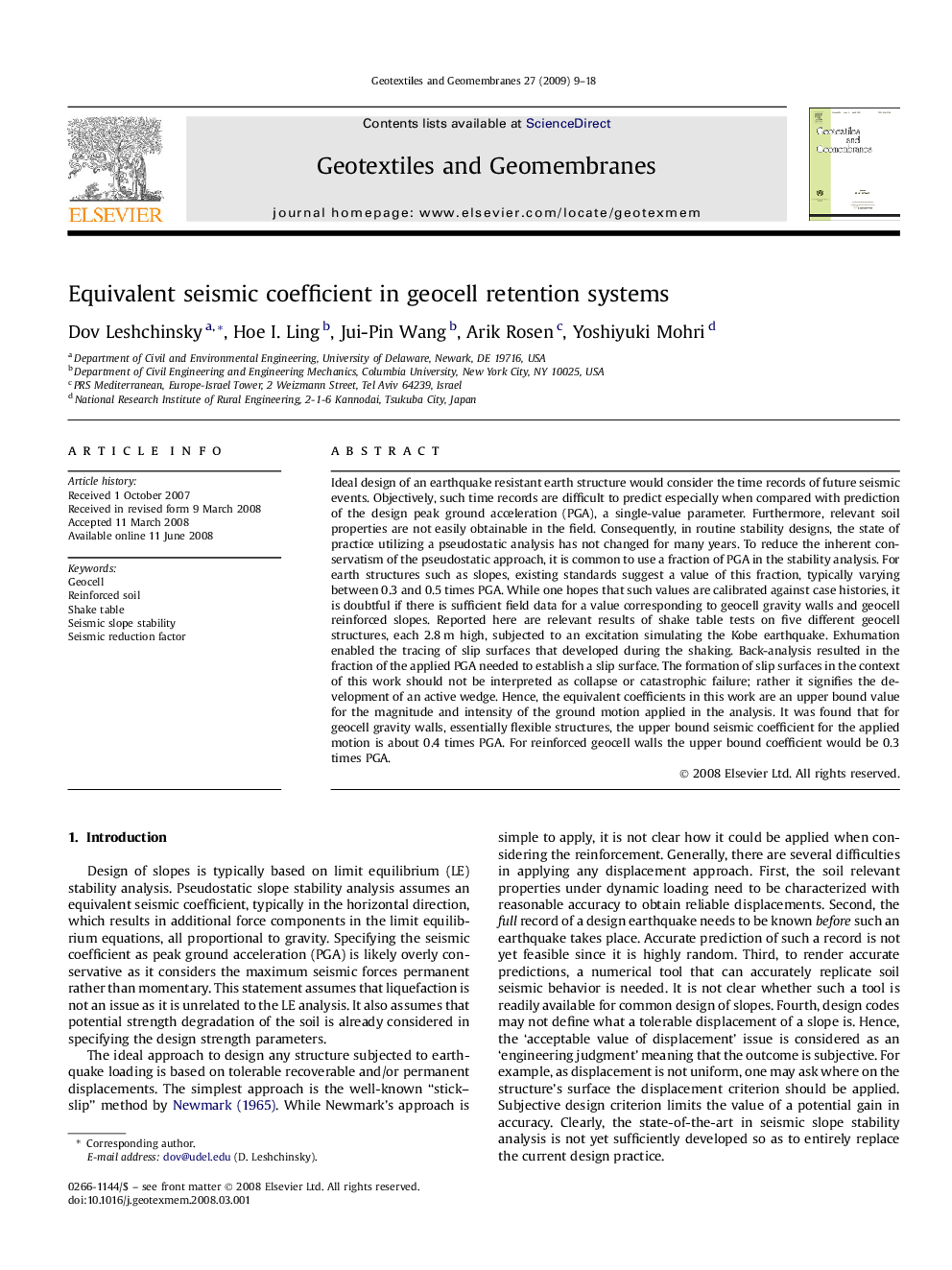| Article ID | Journal | Published Year | Pages | File Type |
|---|---|---|---|---|
| 274500 | Geotextiles and Geomembranes | 2009 | 10 Pages |
Ideal design of an earthquake resistant earth structure would consider the time records of future seismic events. Objectively, such time records are difficult to predict especially when compared with prediction of the design peak ground acceleration (PGA), a single-value parameter. Furthermore, relevant soil properties are not easily obtainable in the field. Consequently, in routine stability designs, the state of practice utilizing a pseudostatic analysis has not changed for many years. To reduce the inherent conservatism of the pseudostatic approach, it is common to use a fraction of PGA in the stability analysis. For earth structures such as slopes, existing standards suggest a value of this fraction, typically varying between 0.3 and 0.5 times PGA. While one hopes that such values are calibrated against case histories, it is doubtful if there is sufficient field data for a value corresponding to geocell gravity walls and geocell reinforced slopes. Reported here are relevant results of shake table tests on five different geocell structures, each 2.8 m high, subjected to an excitation simulating the Kobe earthquake. Exhumation enabled the tracing of slip surfaces that developed during the shaking. Back-analysis resulted in the fraction of the applied PGA needed to establish a slip surface. The formation of slip surfaces in the context of this work should not be interpreted as collapse or catastrophic failure; rather it signifies the development of an active wedge. Hence, the equivalent coefficients in this work are an upper bound value for the magnitude and intensity of the ground motion applied in the analysis. It was found that for geocell gravity walls, essentially flexible structures, the upper bound seismic coefficient for the applied motion is about 0.4 times PGA. For reinforced geocell walls the upper bound coefficient would be 0.3 times PGA.
